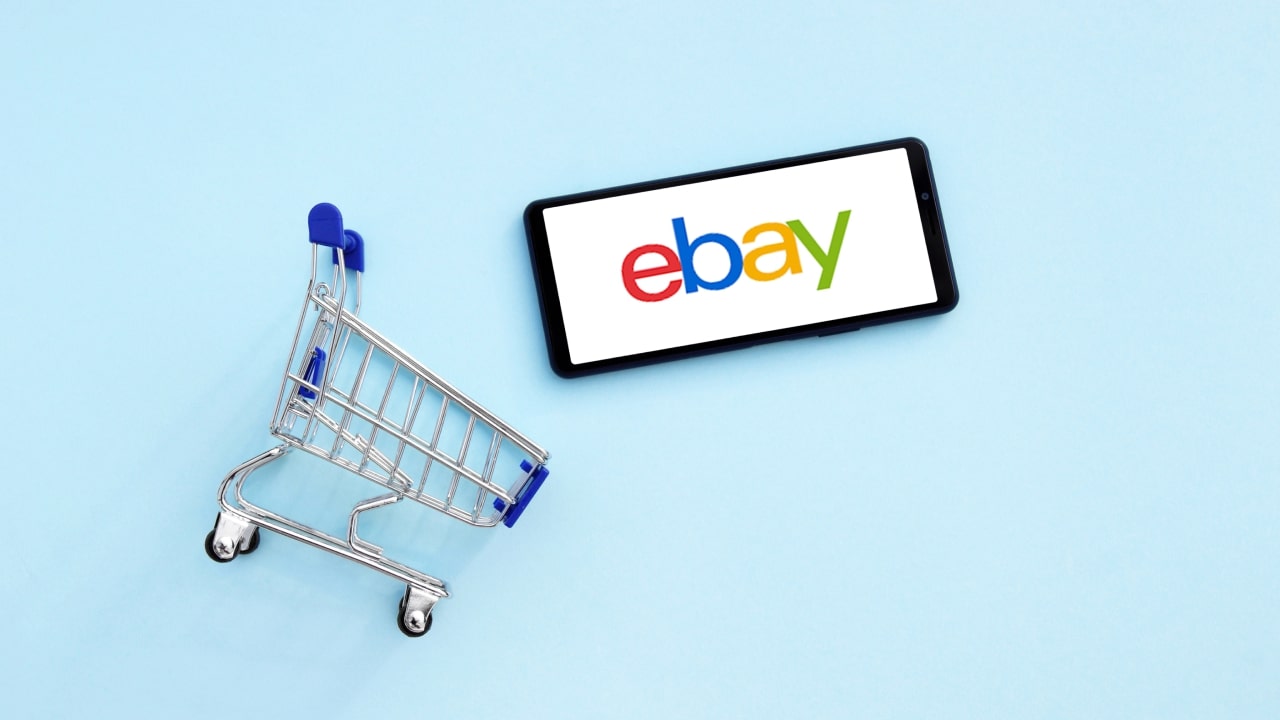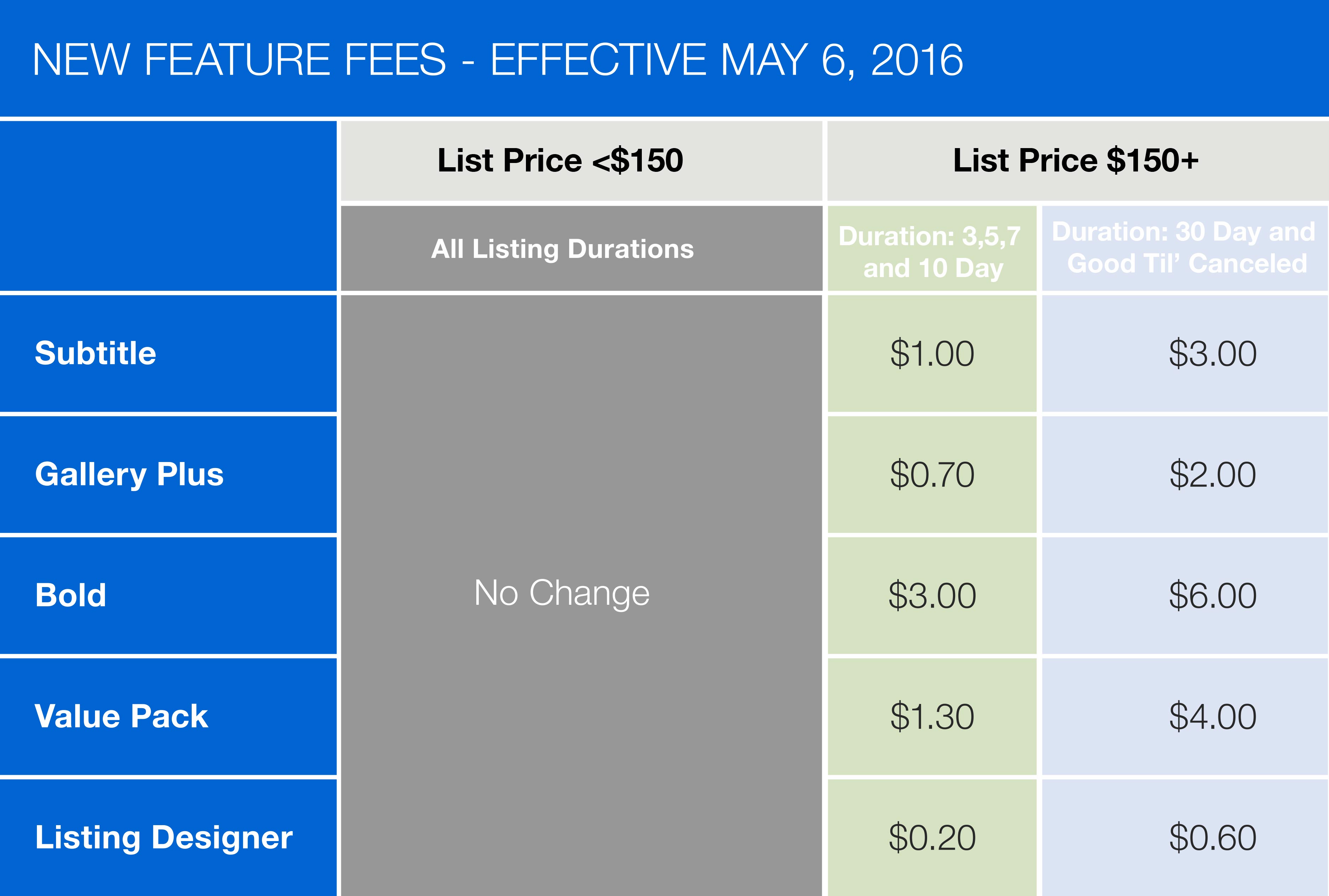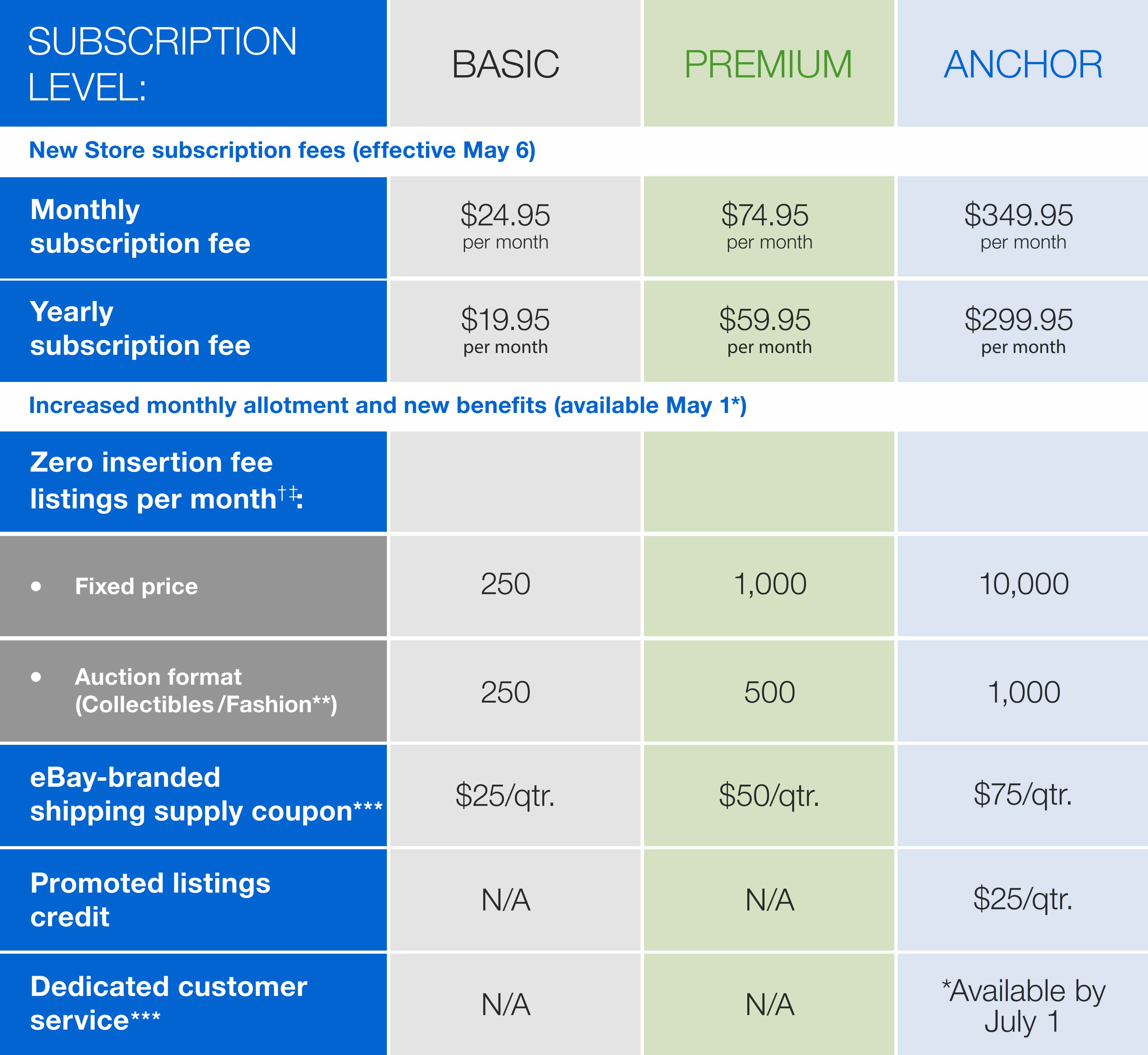Understanding eBay’s Fee Structure: A Breakdown of the Costs
When it comes to selling on eBay, one of the most common questions is: does selling on eBay cost money? The answer is yes, eBay charges various fees to sellers, which can eat into their profit margins. To understand the costs associated with selling on eBay, it’s essential to break down the different types of fees.
eBay’s fee structure is designed to encourage sellers to list and sell more items. The platform charges an insertion fee for each listing, which ranges from $0.30 to $4 per listing, depending on the category and type of listing. Additionally, eBay charges a final value fee, which is a percentage of the sale price, ranging from 8% to 12.5%.
PayPal fees are another cost to consider when selling on eBay. PayPal charges a payment processing fee of 2.9% + $0.30 per transaction. This fee is deducted from the sale price, and the remaining amount is transferred to the seller’s PayPal account.
For example, let’s say you sell an item for $100 on eBay. The final value fee would be 8% of $100, which is $8. The PayPal fee would be 2.9% of $100, which is $2.90, plus $0.30. The total fees would be $8 + $2.90 + $0.30 = $11.20. This means you would receive $88.80 in your PayPal account.
Understanding eBay’s fee structure is crucial to determining whether selling on the platform is profitable for your business. By factoring in the various fees, you can set competitive prices and ensure you’re making a profit on your sales.
How to Minimize Your eBay Selling Costs: Tips and Strategies
When it comes to selling on eBay, minimizing costs is crucial to maximizing profits. One of the most effective ways to reduce eBay selling costs is to use free listings. eBay offers a limited number of free listings per month, depending on the seller’s account type. By using these free listings strategically, sellers can save on insertion fees and allocate more resources to other areas of their business.
Optimizing titles and descriptions is another way to reduce eBay selling costs. By using relevant keywords and phrases, sellers can improve their listings’ visibility and attract more buyers. This can lead to higher sales and reduced costs associated with relisting items. Additionally, eBay’s promoted listings feature can help sellers increase their visibility and sales, while also reducing costs associated with advertising.
Pricing items competitively is also essential to minimizing eBay selling costs. By using eBay’s pricing research tools, sellers can determine the optimal price for their items and avoid overpricing, which can lead to reduced sales and increased costs. Furthermore, providing excellent customer service can help sellers build a positive reputation and reduce costs associated with returns and refunds.
Another strategy for minimizing eBay selling costs is to utilize eBay’s seller tools. eBay offers a range of tools, including listing templates, inventory management, and shipping labels, which can help sellers streamline their operations and reduce costs. By taking advantage of these tools, sellers can save time and money, and focus on growing their business.
Finally, sellers should regularly review their eBay selling costs and adjust their strategies accordingly. By monitoring their costs and making adjustments as needed, sellers can ensure they are minimizing their costs and maximizing their profits. By following these tips and strategies, sellers can reduce their eBay selling costs and achieve success on the platform.
The Hidden Costs of Selling on eBay: What You Need to Consider
When it comes to selling on eBay, many sellers focus on the fees associated with listing and selling their items. However, there are several hidden costs that can impact profit margins and affect the overall cost of selling on eBay. One of the most significant hidden costs is shipping. Sellers need to factor in the cost of shipping materials, such as boxes, bubble wrap, and tape, as well as the cost of shipping itself.
Another hidden cost is packaging materials. Sellers need to ensure that their items are properly packaged to prevent damage during shipping. This can include using specialized packaging materials, such as foam inserts or custom boxes. Additionally, sellers may need to consider the cost of printing shipping labels and packaging slips.
Customer service expenses are also a hidden cost of selling on eBay. Sellers need to respond to customer inquiries, resolve issues, and provide refunds or replacements when necessary. This can be time-consuming and may require additional resources, such as customer service software or staffing.
Furthermore, sellers may need to consider the cost of inventory management. This can include the cost of storing and managing inventory, as well as the cost of tracking and updating inventory levels. Sellers may also need to consider the cost of returns and refunds, which can be a significant expense if not managed properly.
To minimize these hidden costs, sellers can take several steps. One strategy is to use free shipping materials, such as recycled boxes and packing paper. Sellers can also use eBay’s shipping labels and packaging slips to streamline the shipping process. Additionally, sellers can use customer service software to manage customer inquiries and issues more efficiently.
By understanding the hidden costs of selling on eBay, sellers can better manage their expenses and maximize their profits. By factoring in these costs and taking steps to minimize them, sellers can ensure that they are making the most of their eBay sales.
eBay’s Optional Features: Are They Worth the Extra Cost?
eBay offers a range of optional features that can help sellers increase their visibility, sales, and profits. However, these features come with an extra cost, and sellers need to carefully consider whether they are worth the investment. One of the most popular optional features is promoted listings, which allows sellers to pay a fee to have their listings appear at the top of search results.
Another optional feature is sponsored content, which allows sellers to create sponsored listings that appear on eBay’s homepage and other high-traffic pages. This feature can be particularly effective for sellers who want to increase their brand awareness and reach a wider audience.
eBay Plus is another optional feature that offers sellers a range of benefits, including free shipping, free returns, and exclusive discounts. This feature can be particularly effective for sellers who want to offer their customers a premium shopping experience and increase their customer loyalty.
However, these optional features come with a cost, and sellers need to carefully consider whether they are worth the investment. For example, promoted listings can cost anywhere from 1% to 5% of the sale price, depending on the category and competition. Sponsored content can cost anywhere from $0.10 to $5.00 per click, depending on the ad format and targeting.
To determine whether these optional features are worth the extra cost, sellers need to carefully consider their return on investment (ROI). They need to calculate the cost of the feature, the potential increase in sales and profits, and the potential return on investment. By doing so, sellers can make an informed decision about whether to invest in these optional features.
Ultimately, the decision to invest in eBay’s optional features depends on the seller’s business goals, target audience, and marketing strategy. By carefully considering the costs and benefits of these features, sellers can make an informed decision about whether they are worth the extra cost.
How to Calculate Your eBay Selling Costs: A Step-by-Step Guide
Calculating your eBay selling costs is crucial to understanding the true profitability of your online business. Does selling on eBay cost money? Yes, it does, and it’s essential to factor in all the fees and expenses associated with selling on the platform. In this article, we’ll provide a step-by-step guide on how to calculate your eBay selling costs, helping you make informed decisions and maximize your profits.
Step 1: Determine Your eBay Fees
eBay charges various fees, including insertion fees, final value fees, and PayPal fees. The insertion fee ranges from $0.30 to $4 per listing, depending on the category and type of listing. The final value fee ranges from 8% to 12.5% of the sale price, depending on the category and your seller level. PayPal fees range from 2.9% + $0.30 per transaction.
Step 2: Calculate Your Shipping Costs
Shipping costs can significantly impact your profit margins. Calculate the cost of shipping each item, including the cost of packaging materials, fuel, and labor. You can use eBay’s shipping calculator to estimate shipping costs.
Step 3: Factor in Other Expenses
In addition to eBay fees and shipping costs, you may incur other expenses, such as the cost of inventory, equipment, and marketing. Make sure to factor these expenses into your calculations.
Step 4: Use eBay’s Profit Calculator
eBay offers a profit calculator that helps you estimate your profits based on the sale price, fees, and shipping costs. You can access the profit calculator in your eBay seller account.
Step 5: Calculate Your Net Profit
Once you’ve calculated your eBay fees, shipping costs, and other expenses, subtract these costs from the sale price to determine your net profit. This will give you a clear understanding of your profit margins and help you make informed decisions about your pricing and inventory.
Example Calculation:
Let’s say you sell an item for $100. The insertion fee is $0.30, the final value fee is 8% ($8), and the PayPal fee is 2.9% + $0.30 ($3.20). Your shipping cost is $10, and you incur other expenses of $5. Your net profit would be:
$100 (sale price) – $0.30 (insertion fee) – $8 (final value fee) – $3.20 (PayPal fee) – $10 (shipping cost) – $5 (other expenses) = $73.50 (net profit)
By following these steps, you can accurately calculate your eBay selling costs and make informed decisions about your online business. Remember, does selling on eBay cost money? Yes, it does, but with the right calculations and strategies, you can maximize your profits and succeed on the platform.
Maximizing Your eBay Profits: Strategies for Success
Maximizing profits on eBay requires a combination of effective strategies and a deep understanding of the platform’s dynamics. Does selling on eBay cost money? Yes, it does, but with the right approach, you can minimize costs and maximize profits. In this article, we’ll explore the most effective strategies for maximizing your eBay profits.
Offer Competitive Pricing
Pricing is a critical factor in determining your eBay profits. To maximize profits, you need to offer competitive pricing that attracts buyers and encourages sales. Use eBay’s pricing research tools to determine the optimal price for your items, and adjust your prices regularly to stay competitive.
Provide Excellent Customer Service
Customer service is essential for building trust and loyalty with your buyers. Respond promptly to buyer inquiries, resolve issues quickly, and provide accurate descriptions and images of your items. Excellent customer service can lead to positive feedback, repeat business, and increased profits.
Utilize eBay’s Seller Tools
eBay offers a range of seller tools that can help you maximize profits, including listing analytics, sales reports, and performance metrics. Use these tools to track your sales, identify areas for improvement, and optimize your listings for better performance.
Optimize Your Listings
Optimizing your listings is crucial for attracting buyers and maximizing profits. Use relevant keywords in your titles and descriptions, and include high-quality images that showcase your items from different angles. Make sure your listings are accurate, complete, and comply with eBay’s policies.
Use eBay’s Performance Metrics
eBay’s performance metrics provide valuable insights into your sales performance, including your seller rating, feedback score, and sales velocity. Use these metrics to identify areas for improvement, optimize your listings, and increase your profits.
Strategies for Success
In addition to the strategies mentioned above, here are some additional tips for maximizing your eBay profits:
• Use eBay’s promoted listings feature to increase visibility and attract more buyers.
• Offer free shipping or discounted shipping rates to attract more buyers.
• Use eBay’s pricing research tools to determine the optimal price for your items.
• Provide excellent customer service to build trust and loyalty with your buyers.
• Utilize eBay’s seller tools to track your sales, identify areas for improvement, and optimize your listings.
By implementing these strategies, you can maximize your eBay profits and achieve success on the platform. Remember, does selling on eBay cost money? Yes, it does, but with the right approach, you can minimize costs and maximize profits.
eBay’s Seller Fees: How They Compare to Other Marketplaces
When it comes to selling online, one of the most important factors to consider is the cost of selling on each platform. Does selling on eBay cost money? Yes, it does, but how do eBay’s seller fees compare to those of other online marketplaces? In this article, we’ll explore the seller fees of eBay, Amazon, and Etsy, and provide guidance on how to choose the best marketplace for your business.
eBay’s Seller Fees
eBay charges various fees, including insertion fees, final value fees, and PayPal fees. The insertion fee ranges from $0.30 to $4 per listing, depending on the category and type of listing. The final value fee ranges from 8% to 12.5% of the sale price, depending on the category and your seller level. PayPal fees range from 2.9% + $0.30 per transaction.
Amazon’s Seller Fees
Amazon charges a flat fee of $0.99 per sale, plus a referral fee that ranges from 8% to 15% of the sale price, depending on the category. Amazon also charges a shipping fee, which ranges from $2.41 to $4.71 per item, depending on the weight and dimensions of the item.
Etsy’s Seller Fees
Etsy charges a listing fee of $0.20 per item, plus a transaction fee of 3.5% of the sale price. Etsy also charges a payment processing fee of 3% + $0.25 per transaction.
Comparison of Seller Fees
When comparing the seller fees of eBay, Amazon, and Etsy, it’s clear that each platform has its own strengths and weaknesses. eBay’s fees are generally higher than those of Amazon and Etsy, but eBay’s large customer base and trusted brand make it a popular choice for many sellers. Amazon’s fees are generally lower than those of eBay, but Amazon’s strict policies and competitive marketplace make it challenging for new sellers to succeed. Etsy’s fees are generally lower than those of eBay and Amazon, but Etsy’s niche marketplace and limited customer base make it less appealing to some sellers.
Choosing the Best Marketplace for Your Business
When choosing the best marketplace for your business, it’s essential to consider the seller fees, as well as other factors such as the target audience, competition, and ease of use. If you’re looking for a large customer base and trusted brand, eBay may be the best choice for you. If you’re looking for lower fees and a more competitive marketplace, Amazon may be the best choice for you. If you’re looking for a niche marketplace and lower fees, Etsy may be the best choice for you.
Ultimately, the best marketplace for your business will depend on your specific needs and goals. By understanding the seller fees of each platform and considering other factors, you can make an informed decision and maximize your profits.
Conclusion: The Real Cost of Selling on eBay
In conclusion, selling on eBay can be a profitable venture, but it’s essential to understand the real cost of selling on the platform. Does selling on eBay cost money? Yes, it does, but with the right strategies and tools, you can minimize costs and maximize profits.
Throughout this article, we’ve explored the different types of fees associated with selling on eBay, including insertion fees, final value fees, and PayPal fees. We’ve also discussed the importance of pricing items competitively, using eBay’s pricing research tools, and providing excellent customer service to build trust and loyalty with buyers.
In addition, we’ve examined eBay’s optional features, such as promoted listings and sponsored content, and discussed their benefits and drawbacks. We’ve also compared eBay’s seller fees to those of other online marketplaces, such as Amazon and Etsy, and provided guidance on how to choose the best marketplace for your business.
To succeed on eBay and maximize profits, it’s crucial to understand the real cost of selling on the platform. By factoring in fees, shipping costs, and other expenses, you can make informed decisions and optimize your listings for better performance. Remember to use eBay’s profit calculator and other tools to streamline the process and stay competitive.
Ultimately, the key to success on eBay is to be proactive, adaptable, and customer-focused. By providing excellent customer service, offering competitive pricing, and utilizing eBay’s seller tools, you can build a loyal customer base and maximize your profits.
As you navigate the world of eBay selling, keep in mind that the platform is constantly evolving, and new features and tools are being added regularly. Stay up-to-date with the latest developments, and be willing to adjust your strategies as needed to stay competitive.
By following the tips and strategies outlined in this article, you can minimize costs, maximize profits, and achieve success on eBay. Remember, does selling on eBay cost money? Yes, it does, but with the right approach, you can turn a profit and build a thriving online business.






